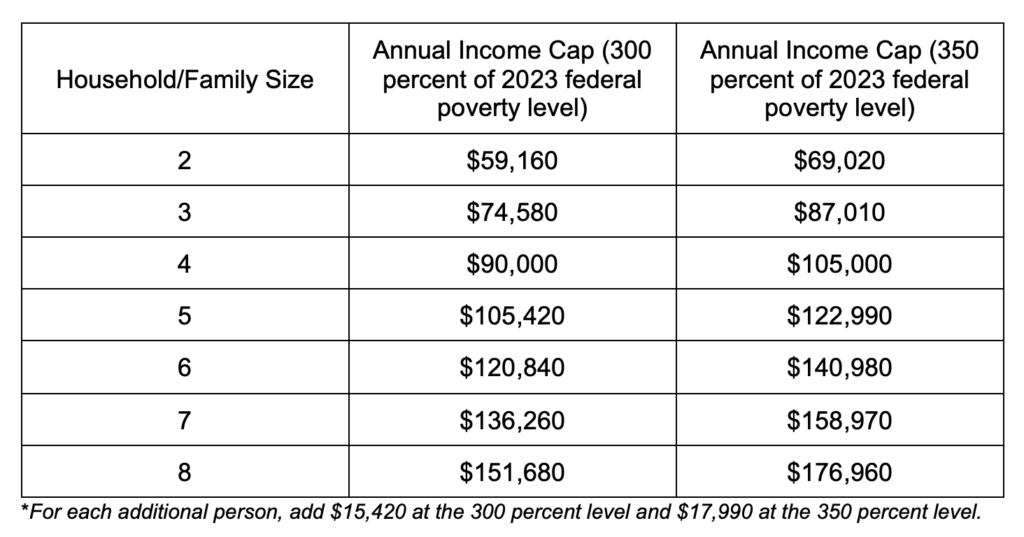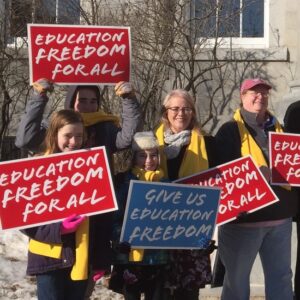In a blow to school choice opponents, the New Hampshire Senate passed HB 367 in a 14-10 party-line vote Wednesday, expanding eligibility for the popular Education Freedom Account (EFA) program.
With Gov. Chris Sununu expected to sign it into law, HB 367 will expand eligibility for the EFA program from families making no more than 300 percent of the federal poverty level to households with income at or below 350 percent of the federal poverty level.
That is a 16.7 percent increase in the EFA income eligibility cap.
“This win is a great step in the right direction toward empowering New Hampshire families with education freedom,” Corey DeAngelis, a national advocate of school choice and executive director of the Educational Freedom Institute, told NHJournal.
The EFA program gives the state’s share of per-pupil public education spending, around $5,000, directly to parents in low- and middle-income families to use for any education choice: Private school, home school, or a public school outside their district.
Rather than going to a student’s government-assigned public school, the student’s per-pupil adequacy dollars are put into an Education Freedom Account that families can use to pay for various education-related expenses, including tuition, textbooks, technology, special education services, and more.
Or, as DeAngelis puts it, to “fund students, not systems.”
EFAs have become increasingly popular since their adoption in the state, with 2022 enrollment at 3,025 compared to 1,635 in 2021. Enrollment for the 2022-23 school year, according to the New Hampshire Department of Education, is 3,196.20. (The .20 represents a student enrolled for only part of the school year).
HB 367 passed the House by a narrow 187-184 vote, showing how contentious school choice remains in the state.
And passing EFA expansion in the Senate was not without spirited debate going back to when the Senate first took up the issue last month.
Sen. Donovan Fenton (D-Keene) was the first to voice opposition to expanding school choice, saying, “The Education Freedom Account program in New Hampshire is like nothing we have ever seen before. From the nonexistence of accountability and transparency to the blatant lack in fiscal responsibility to our taxpayers…and yet, HB 367 wants to raise the cap for more to be spent.”
After its passage, Sen. Debra Altschiller (D-Stratham) expressed disappointment. “I am, once again, disappointed in Senate Republicans’ irresponsible and unchecked spending, this time in the form of a multi-million taxpayer dollar giveaway.”
Asked how spending the same amount of state tax dollars on the same students’ educations was a “giveaway,” Altschiller declined to respond.
Meanwhile, a study published by the Josiah Bartlett Center for Public Policy found inflation-adjusted spending on public schools increased by nearly $1 billion (or 40 percent) from 2001 to 2019, even as enrollment dropped by 14 percent.
EFA spending per student was an average of $4,857 in 2022, significantly less than public education spending per student in the state. According to the Josiah Bartlett Center, total public education spending per student (state and local dollars) in New Hampshire was $18,905 in 2019. As of the 2021-22 school year, the N.H. Department of Education found that the average statewide cost per student was $19,399.97. At the beginning of the current school year, it was $21,386.
And because local dollars remain with the local schools when students opt for the EFA program, the program results in a net increase in per-pupil spending.
The state Department of Education reports that in 2022 the EFA program provided “grants totaling nearly $14.7 million this school year. The cost to taxpayers would be about $65 million if the 3,025 students, who are all eligible, attended a traditional public school.”
Some senators opposed the program based on concerns about race and equity.
Sen. Daryl Abbas (R-Salem) defended the EFAs. “The children who have the highest propensity of benefiting from this are minority children of color. This creates opportunities for low-income families who do not have this opportunity, who do not have the same opportunities as everyone else….This is equity.”
But Sen. Lou D’Allesandro (D-Manchester) said too many White students benefitted from the program.
“I looked at the numbers that access the Education Freedom Accounts, and to my dismay, 2,489 White students took advantage of the program,” D’Allesandro said. “One hundred fifty African Americans took advantage of the freedom accounts. One hundred thirty-nine Latinos took advantage of the freedom accounts. Nine American Indians or Alaskans took advantage of the accounts. Forty-eight Asian Americans took advantage of the accounts.”
“These accounts are for Whites!” the senator concluded.
The senator’s math is off, according to state DOE data. In fact, 199 Latino or Hispanic students are in the EFA program. And the percentage of White students (82 percent) closely matches the racial makeup of the state’s student population, which is about 84 percent White.
Claims that the program only benefits “rich families” are undermined by the data showing that, even with the new expansion, a four-person family’s total income cannot be over $105,000 to apply. With inflationary pressures and the rising cost of living, $105,000 hardly represents a high-income family.
Even more enlightening, 50 percent (1,504) of those enrolled in the EFA program as of 2022 were eligible for free and reduced-price lunches.
“This is probably one of the most equitable programs we have,” Sen. Tim Lang (R-Sanbornton) stated during the debate. “We are taking the poorest individuals and giving them the opportunity that is usually reserved for the richest citizens in our state and giving them access to those programs.”
DeAngelis echoed these sentiments. “Universal school choice is the standard of success. We shouldn’t be picking winners and losers. We fund primary and secondary education for all children. That money should follow the student, regardless of their family background.”
DeAngelis noted six other states with GOP control of the governor’s mansion and legislature have passed universal school choice with no income requirements.
“We do not restrict access to government schools based on income. We shouldn’t restrict access to Education Freedom Accounts based on income, either.”
The following shows the maximum eligible income levels under this expansion versus the current eligibility levels.





